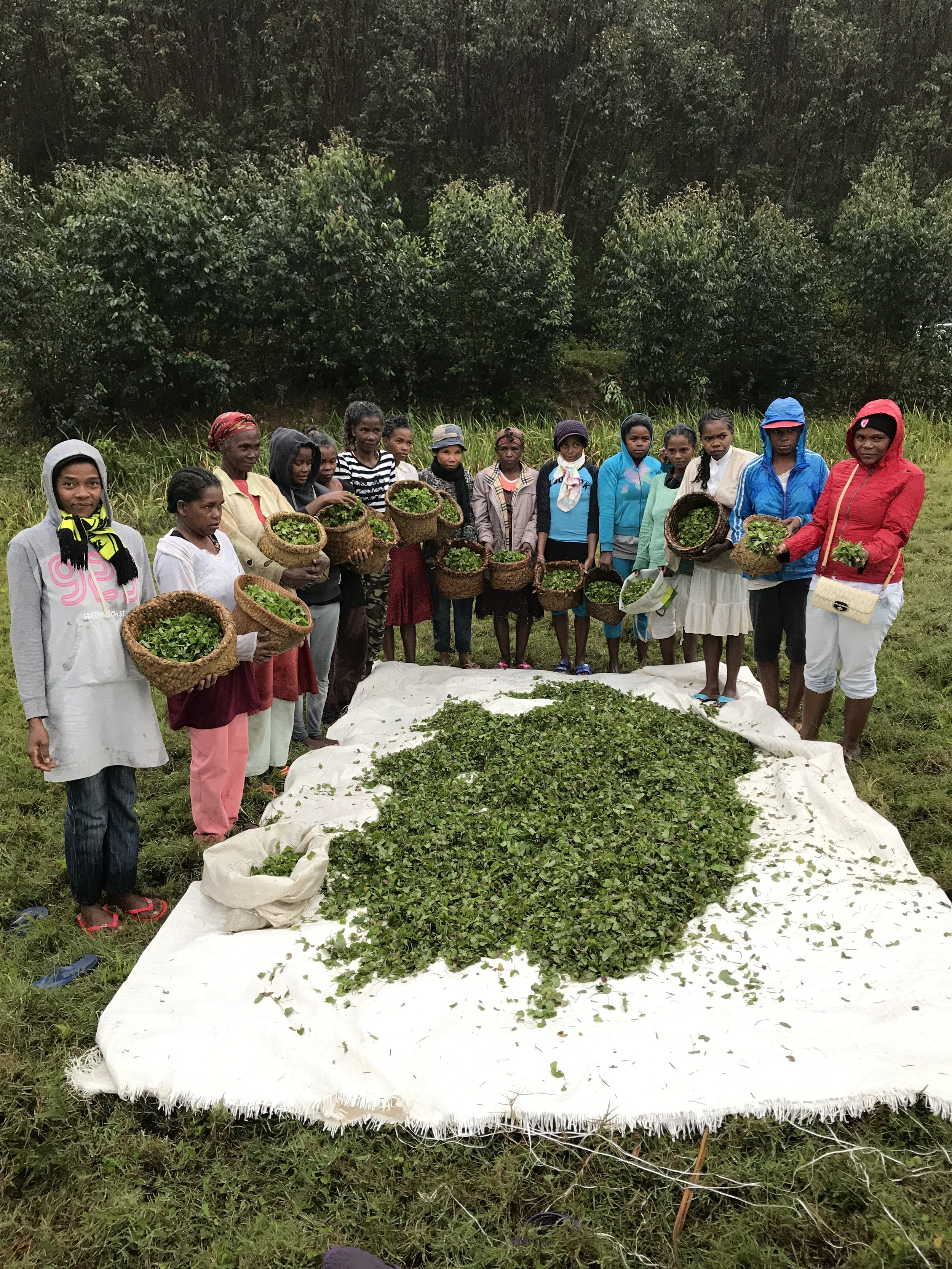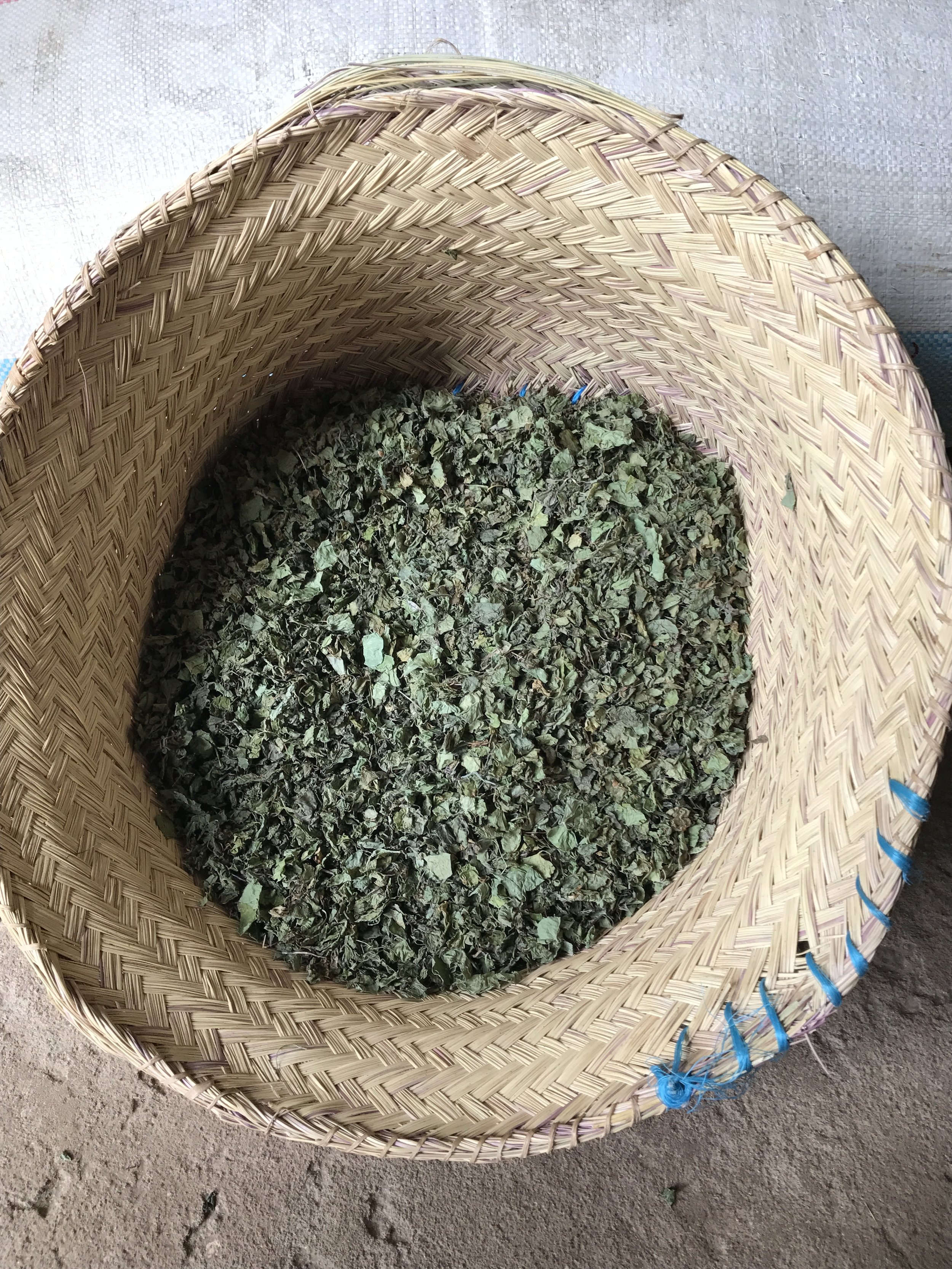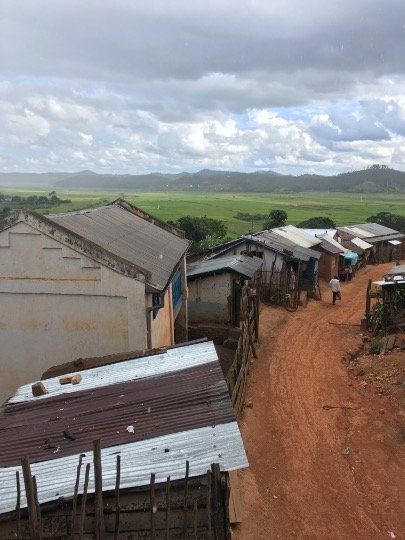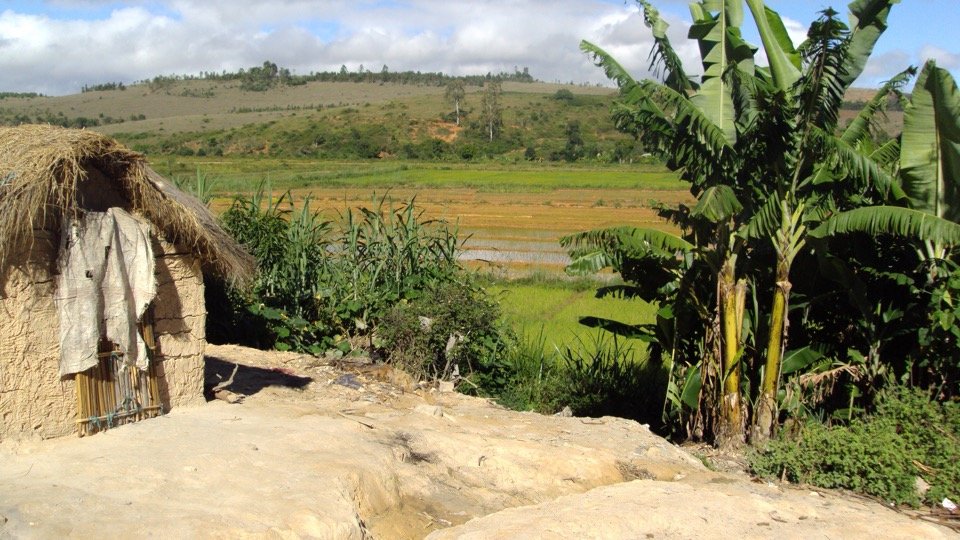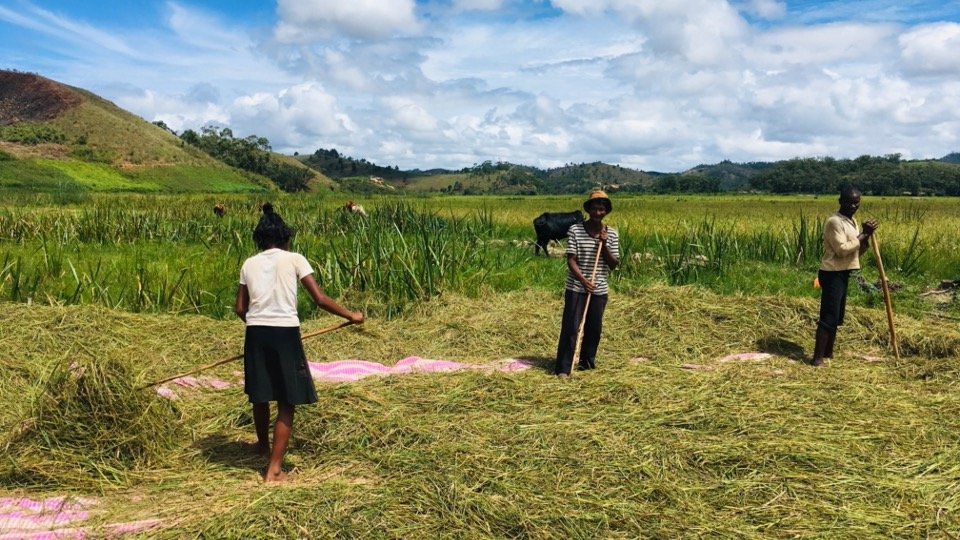Centella asiatica
Towards supply chain transformation in support of female pickers and biodiversity in Madagascar
Centella asiatica is a flowering plant native to tropical regions of Africa, Asia, Australia, and islands in the western Pacific Ocean. In various countries, it has been used in traditional medicine to treat a range of different conditions. According to a Chinese legend, a person lived more than 200 years as a result of taking Centella, leading to the plant being called "The fountain of life." Numerous stories surrounding Centella Asiatica's skin benefits attracted the attention of researchers around the world and, in the 1940s, French and Malagasy scientists succeeded in isolating Centella's main active ingredient. Today, Centella can be found as the primary ingredient many skincare products
The plant itself has small fan-shaped green leaves with white, pink or purple flowers, and small oval-shaped fruits. It thrives in and around water, and grows in humid habitats such as alongside rivers, and in wetlands and rice fields. Centella matures in three months, and the plant is collected by hand.
In Madagascar, Centella is known as ‘Talapetraka’ and has long been valued domestically; used in cooking or to treat minor digestive ailments. With its rainy season and submerged fields, Madagascar has ideal conditions for the plant to grow abundantly in the wild. As a result, the country is one of the leading producers of Centella leaves, especially from the Alaotra-Mangoro region. The leaves are picked mostly by women, between October and May when the active ingredients are most concentrated. Centella is dried and crushed by local processing companies, including various UEBT member companies. The wild herb is an important additional source of income for local women, especially during a period in the year when few other income opportunities are available. Centella contributes to the livelihoods of approximately 50,000 women in Madagascar, many of whom have no access to farmland. In the botanicals sector, it is also an important export product for Madagascar.
Significant challenges in Centella supply chain
However, there are several challenges linked to Centella activities in Madagascar. Many pickers live in remote areas with high levels of poverty and lack of access to basic services. Prices for Centella are generally low, which means pickers do not usually reach the equivalent of the Malagasy minimum wage for the hours spent on Centella collection [1]. Traceability is scattered in a sector that is still highly informal. When families don’t have the means to send their children to school, many women pickers bring their children along with them to the Centella collection areas.
UEBT Madagascar is highly involved in local projects that seek to improve sourcing practices of Centella and respect people and biodiversity.
“Payment of fairer prices is a key responsibility of all supply chain actors that use Centella asiatica. The goal should be payment of a living income[2], rather than just paying a minimum wage per hour of Centella collected. We call on all international brands using Centella to take up this responsibility and make a real difference in the lives of thousands of women,” says Rik Kutsch Lojenga, UEBT Executive Director.
Projects to support women and the environment
One important project that UEBT works on as a partner is a Solidarity Sourcing project that L’Oréal and its supply chain partners started in 2016 and is still in place. The project works with thousands of local pickers, local processing companies such as Ravina and Madagascar Green Product (MGP) and international processing companies such as Indfrag Biosciences. The project successfully implements a comprehensive approach, focusing on improved traceability, good collection practices, payment of fairer prices, creation of local associations of pickers, access to education, and sustainable use and regeneration of biodiversity.
Recently, the BioInnovation Project of GIZ, which also supported the project directly, started working with UEBT and other public and private partners to explore sectoral actions to address the challenges in Centella collection.
Rina Razanakolona, Director of UEBT Madagascar says, "Malagasy Centella pickers are among the poorest in society. UEBT works with some local companies to pay Centella pickers a price that is at least equivalent to the minimum wage per hour picking, and promotes projects to support nutrition and income diversification such as vegetable gardens. Projects are also in place to increase school attendance, by providing school materials, improving class room infrastructure, and training teachers. Since Madagascar is a biodiversity hotspot we also work to train pickers on collection practices that respect biodiversity and promote projects such as reforestation to regenerate biodiversity. Unfortunately, such practices and projects are not widespread in the sector yet. We need all actors, pickers, processing companies, importers to step up their responsibility to improve local livelihoods.
Regeneration study conducted
A UEBT regeneration study on Centella was conducted as part of L’Oréal’s Solidarity Sourcing project due to an increasing awareness of the need to study the availability of Centella. Centella’s specific ecology, diversity, population and reproduction might be affected by collection, habitat degradation and climate alterations. UEBT isolated specific plots of Centella and looked at differences in use and other aspects of the plant and found that Centella’s availability was not in danger in the particular study area. Regeneration rates in most of the sites were good and areas where UEBT practices[3] were followed showed similar regeneration rates to areas where no collection took place.
Buyers of Centella: support local efforts
UEBT members working in Centella are currently on a journey to improve sourcing practices for people and biodiversity but they can't make the systemic change on their own. They need the collaboration of companies buying Centella to help them implement good collection practices and pay higher prices to pickers. UEBT is here to support the work of those companies by providing practical and comprehensive approaches to validating supply chain practices against the requirements in the UEBT standard (UEBT verification and certification programmes) including requirements related to minimum and living wages for workers.
Is your company based in or working with Centella in Madagascar? To learn more about UEBT verification and certification programmes, please contact: Madagascar@uebt.org
[1] Minimum wages have been defined by International Labour Organisation (ILO) as “the minimum amount of remuneration that an employer is required to pay wage earners for the work performed during a given period, which cannot be reduced by collective agreement or an individual contract.”
[2] As defined by the Global Living Wage Coalition, a living wage is the remuneration received for a standard workweek by a worker in a particular place sufficient to afford a decent standard of living for the worker and her or his family. Elements of a decent standard of living (according to the Anker Methodology) include food, water, housing, education, health care, transportation, clothing, and other essential needs, including provision for unexpected events. In-kind benefits can be valued and considered to reach a living wage benchmark or reference values.
[3] UEBT standard requires companies to:
Monitor the regeneration rate of species collected and interdependent species
Adopt collection practices that ensure long-term survival of -both species like collecting only the leaves (not the root) waiting a couple of weeks between one collection round and the other in the same area etc.
Adapt collection practices and species selection to emerging climatological conditions


